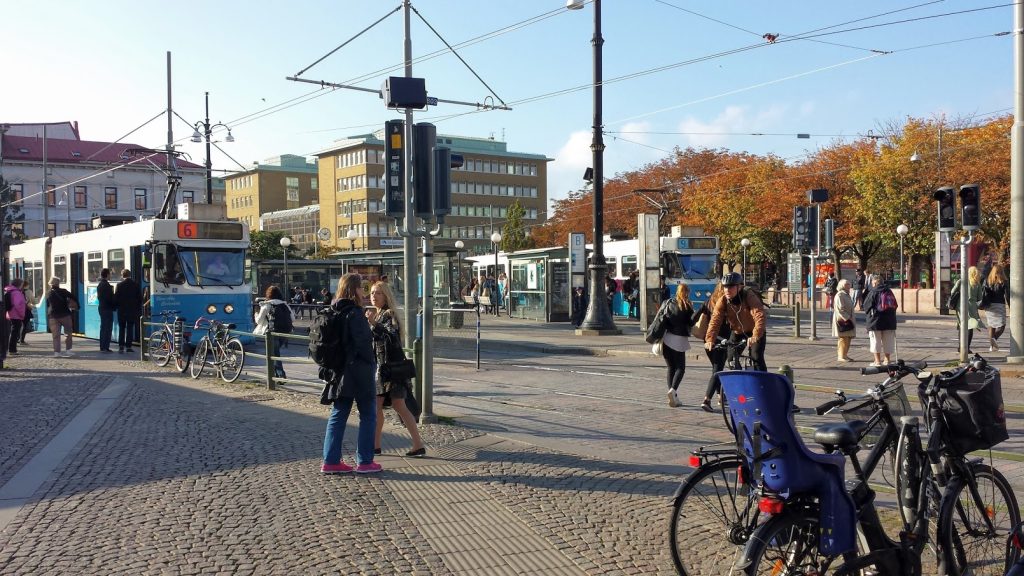Sweden is known worldwide for its calm environment, innovative design, and organized city planning, but everyday life there often surprises visitors even more than expected. Photos taken by travelers and locals highlight how Sweden stands apart from many other countries in terms of lifestyle, public services, and social norms. From transportation to community habits, these glimpses reveal a culture built around practicality, equality, and respect.
Public Spaces Designed With Purpose
One of the first things people notice about Sweden is how thoughtfully public spaces are arranged. Parks, bus stops, and walking paths often combine modern design with comfort. Benches are placed to maximize natural views, playgrounds are built using sustainable materials, and even small community areas feel intentionally crafted. Cleanliness is another major standout. Whether in large cities or small towns, streets are well-maintained, litter is rare, and public recycling bins are common. This reflects a national commitment to environmental responsibility that shapes much of Swedish life.

Transportation That Prioritizes Efficiency
Sweden places great emphasis on safe and efficient transportation. Many photos show orderly bike lanes, large walking areas, and public transport systems that run on time. Trains and buses are designed for accessibility, and passengers typically board in a calm, organized manner. Cycling culture is especially strong. Dedicated bike paths stretch across cities, encouraging residents to cycle even in winter. Bikes often come equipped with covered child seats, storage boxes, or thermal accessories, making them a practical year-round option.
Weather Preparedness as a Way of Life
Because of the country’s long and harsh winters, Swedes adapt their daily routines to weather conditions with impressive ease. Snow-clearing machines work efficiently throughout the colder months, and sidewalks are treated early to prevent icy surfaces. Children continue to play outdoors even when temperatures drop, bundled in high-quality thermal gear. Many schools and daycare centers actually encourage outdoor play during winter as a way to build resilience and keep children active. Seeing strollers parked outside cafés or preschools while babies nap in the cold is not unusual — something that often surprises visitors but is seen as perfectly normal in Sweden.
A Culture of Trust and Independence
One of the most striking aspects of Swedish society is the high level of trust. Many photos highlight examples of this cultural trait: unattended strollers outside shops, personal belongings left in public spaces, or self-service farm stands where people take produce and leave money in a small box. This sense of trust extends to children as well. It’s common to see kids walking or cycling to school on their own, a sign of both community safety and Sweden’s belief in encouraging early independence.
Impressive Social Consideration
Another defining feature of life in Sweden is how thoughtfully it accommodates people of all ages and needs. Public ramps, elevators, and smooth pathways are widespread, ensuring that individuals with mobility challenges can navigate cities easily. Parents benefit from family-friendly infrastructure. Many restaurants and public buildings provide child seats, play areas, and accessible changing tables. Workplaces and public institutions are equally supportive, reflecting Sweden’s strong commitment to work–life balance.

Everyday Behaviors That Stand Out
Small everyday moments often leave the strongest impression. People queue patiently, rarely push or rush, and maintain a quiet atmosphere on public transport. Even in larger cities, crowds remain surprisingly calm. Photos frequently show Swedes respecting personal space, following rules without being asked, and behaving courteously in shared environments. This creates a sense of order and mutual respect that shapes daily life.
A Lifestyle Built on Balance
Taken together, these glimpses into Swedish life paint a picture of a society that values simplicity, comfort, sustainability, and harmony. Whether through beautifully designed public spaces, well-organized transport systems, or social habits rooted in trust, Sweden demonstrates that small choices can greatly improve a community’s quality of life.

















